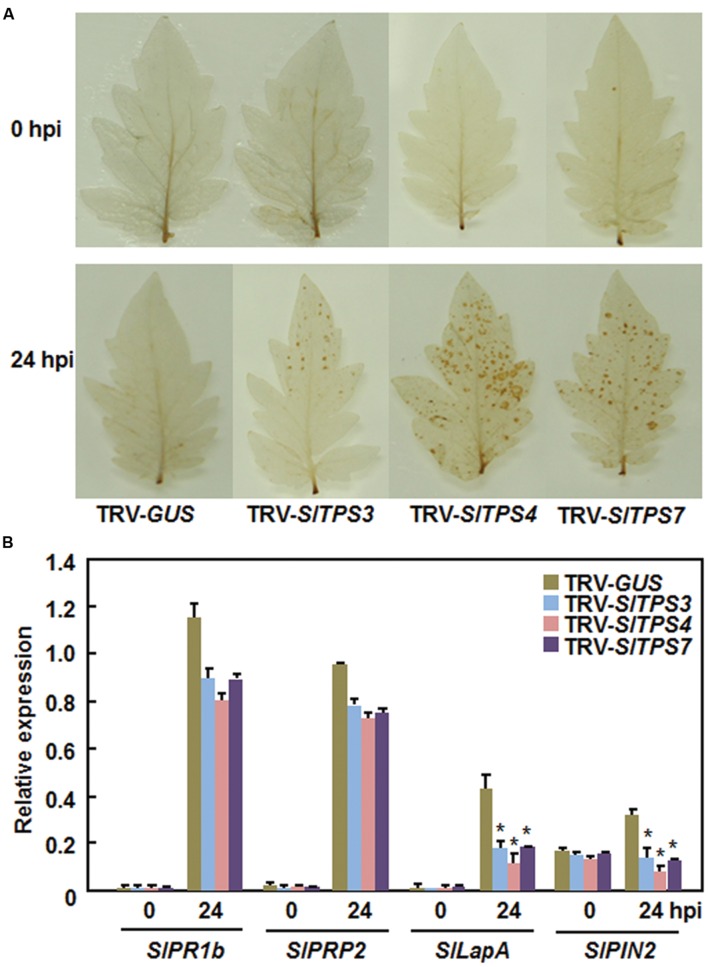FIGURE 6.
Silencing of SlTPS3, SlTPS4, and SlTPS7 increased accumulation of H2O2 and decreased the expression levels of JA/ET signaling-responsive defense-related genes after infection with B. cinerea. Whole plant disease assays were done by foliar spraying with spore suspension at 4 weeks after VIGS infiltration and leaf samples were collected at 24 h after inoculation. (A) Accumulation of H2O2, as detected by DAB staining, in TRV- SlTPS3-, TRV-SlTPS4-, TRV-SlTPS7-, and TRV-GUS-infiltrated plants after infection of B. cinerea. (B) Expression patterns of selected defense-related genes in TRV-SlTPS3-, TRV-SlTPS4-, TRV-SlTPS7-, and TRV-GUS-infiltrated plants after infection of B. cinerea. Expression data for the selected defense-related genes in TRV-SlTPS3-, TRV-SlTPS4-, TRV-SlTPS7-, and TRV-GUS-infiltrated plants were normalized with the value of a reference SlActin gene and relative expression was shown as folds of the SlActin expression level. Similar results were obtained in independent experiments (A) and data presented in (B) are the means ± SD from three independent experiments. ∗ above the columns indicate significant differences at p < 0.05 level between the TRV-SlTPS3/4/7-infiltrated and TRV-GUS-infiltrated plants.

